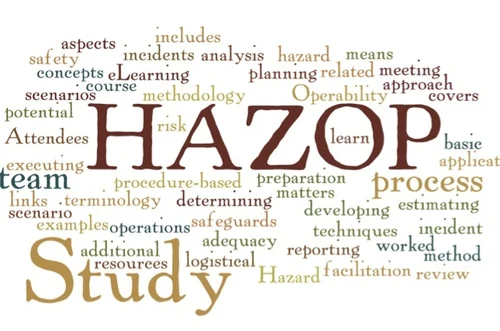Understanding the Purpose of a HAZOP Study

A HAZOP Study (Hazard and Operability Study) is a systematic technique used in industries to identify and evaluate potential risks in processes and operations. It is more than just a compliance activity—it helps prevent unexpected issues that can disrupt production, harm workers, or cause environmental damage. The value of a HAZOP lies in its structured, team-based approach, which goes beyond standard checklists by anticipating deviations from design intent.
The technique involves breaking down a process into steps, analyzing each for potential deviations using guidewords (such as “more,” “less,” “reverse”), and exploring the consequences, causes, and existing safeguards. The study is typically conducted during design stages or when significant changes occur in existing systems.
Why Traditional Checklists Fall Short in Complex Processes
Industrial processes are increasingly complex, and relying solely on checklists for hazard identification can be limiting. Checklists work well for routine inspections or maintenance tasks, but they often fail to capture:
-
Interactions between systems
-
Process deviations
-
Human errors under dynamic conditions
-
New or unfamiliar equipment risks
Checklists are reactive—they confirm what should be present. A HAZOP Study, on the other hand, is proactive. It explores what could go wrong, why it might happen, and how to prevent it.
Real-World Example: Process Deviations and Operational Risk
Consider a case where a pump in a chemical plant is designed to move a specific liquid at a fixed rate. If due to valve malfunction, more liquid flows than expected, this could cause pressure buildup in the next unit, leading to equipment damage or even an explosion. A checklist might only verify the valve’s presence and maintenance record. A HAZOP, however, would explore the deviation “more flow” and evaluate the potential consequences, root causes, and safeguards.
This demonstrates how a Hazop Study provides a much more comprehensive picture of process risks.
Key Elements That Make a HAZOP Study Effective
To ensure the study adds value beyond paperwork, certain principles must be followed:
1. Multi-Disciplinary Team Participation
Involving personnel from process engineering, operations, safety, and instrumentation ensures a range of perspectives. Each team member contributes to spotting unique risk scenarios.
2. Use of Guidewords for Systematic Exploration
Guidewords such as “no flow”, “more pressure”, “incorrect composition” encourage systematic brainstorming. This approach captures hazards that standard documentation may overlook.
3. Well-Defined Node Selection
Each process is divided into nodes—logical sections of the plant, such as between two valves or equipment points. This segmentation allows for a detailed, structured review.
4. Documentation of Consequences and Safeguards
Rather than just listing risks, the team explores potential consequences and current protections. If safeguards are found insufficient, recommendations are made for improvements.
Integrating HAZOP with Broader Safety Strategies
While HAZOP is powerful, its value is amplified when integrated into an organization’s broader Process Safety Management system. This ensures that findings from the HAZOP are implemented, reviewed, and linked to the company’s overall risk reduction goals.
Furthermore, safety strategies like emergency planning, mechanical integrity programs, and incident investigation protocols support the outcomes of HAZOP, creating a full-circle safety system.
How a HAZOP Study Detects Hidden Risks Before They Surface
One of the most important strengths of HAZOP is its ability to uncover subtle risks:
-
Design Errors: Incorrect equipment sizing or wrong materials.
-
Process Integration Issues: How one process unit might affect another.
-
Control System Limitations: Inadequate response to process deviation.
-
Human Factors: Misunderstanding of operating instructions.
This early detection enables industries to take corrective action before incidents occur, minimizing financial losses, operational downtime, and human injuries.
Linking HAZOP Findings to Audit and Compliance Requirements
Once risks are identified during a HAZOP, they must be translated into action. This often includes:
-
Updating safety manuals and procedures
-
Implementing engineering changes
-
Strengthening controls and instrumentation
To verify the effectiveness of these actions, companies may conduct a Safety Audit, ensuring that recommendations are followed through and risk levels are acceptable.
Moreover, audits help maintain regulatory compliance, especially in sectors governed by strict safety laws.
Common Challenges in HAZOP Implementation and How to Overcome Them
Despite its importance, many industries struggle with conducting effective HAZOPs. Some common challenges include:
-
Inadequate preparation: Skipping pre-study information gathering reduces quality.
-
Lack of experienced facilitators: Leads to rushed or incomplete reviews.
-
Poor documentation: Makes it difficult to follow up on recommendations.
-
Limited follow-up: Identified issues may not get resolved.
Organizations can overcome these by involving qualified personnel, maintaining clear records, and tying findings into larger safety efforts such as a Fire Audit for facilities with flammable substances.
The Role of Safety Consultants in Strengthening HAZOP Outcomes
Involving a professional Safety Consultant can help ensure that the HAZOP process is not just a formality. A consultant brings:
-
Independent evaluation of risks
-
Best practices from different industries
-
Assistance in regulatory interpretation
-
Objective facilitation of study sessions
This external expertise helps organizations maintain a high standard in safety planning and risk control.
When and How Often Should a HAZOP Study Be Conducted?
A HAZOP Study is not a one-time event. It should be conducted:
-
During the design phase of a new plant or process
-
Before commissioning a new system
-
When modifying equipment or procedures
-
After major incidents or near misses
-
Every 3 to 5 years as part of a periodic safety review
Conducting it regularly ensures the process remains aligned with operational changes and continues to address emerging risks.
Conclusion: Moving Beyond the Checklist Mentality
Industrial safety demands more than ticking boxes. It requires a proactive, systematic, and collaborative approach to identifying hazards and ensuring control mechanisms are effective. A HAZOP Study offers this by encouraging organizations to think beyond routine checks and delve into potential deviations and consequences.
By integrating HAZOP with broader audits, safety planning, and expert guidance, industries can move closer to operational resilience, regulatory compliance, and incident-free workplaces.






